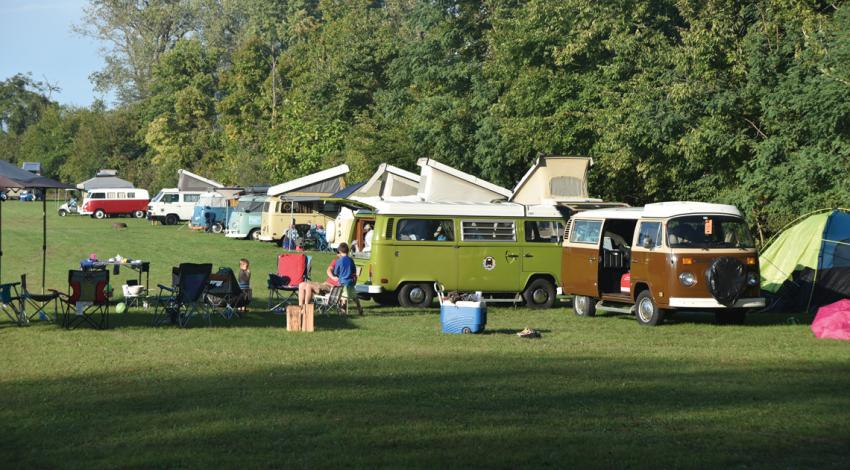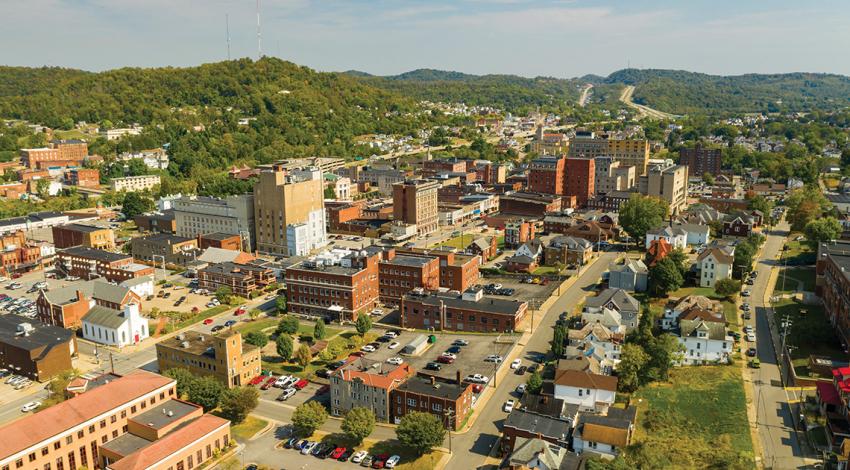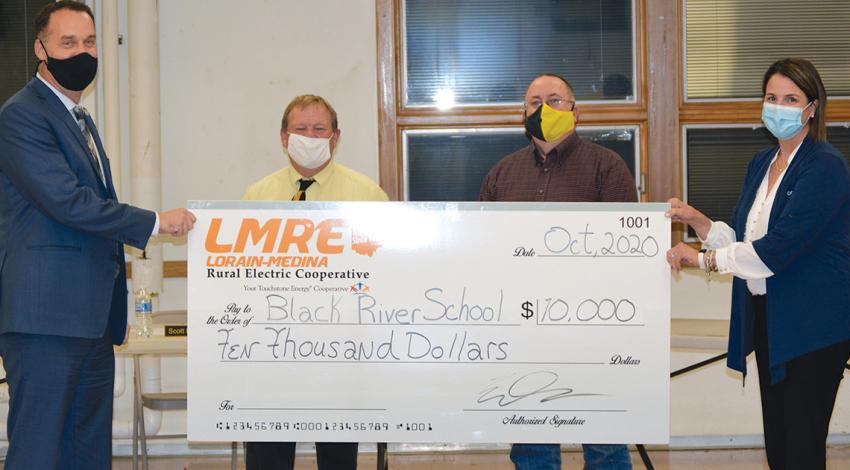The Wever family, members of Union Rural Electric in Marysville, take a keen interest in their electric bills.
Rebecca and Ben Wever, members of Marysville-based Union Rural Electric Cooperative (URE), attended their first co-op annual meeting this year, and they say it got them thinking more about the electricity they use.
Rebecca says she and Ben are keenly aware of events and factors that affect their energy bill, so the meeting was of particular interest. “My husband and I may be a little bit unusual there, but we want to protect our piece of paradise,” she says. “We always want to know why we pay what we do.”
Just like every cooperative member, the Wevers get a bill every month. However, it’s sometimes not apparent what all the expenses are that make up that monthly energy bill.
While URE distributes the power to the Wevers’ home, it’s Buckeye Power that generates and delivers that electricity to the substations owned by URE — and to all the other electric co-ops in Ohio. Buckeye Power is the generation and transmission cooperative that is owned by, and provides power to, all 25 Ohio-based electric cooperatives. Formed in 1959, Buckeye Power is focused on providing clean, safe, reliable, and affordable electricity to the member co-ops, who then distribute it to the nearly 400,000 homes and businesses in the state of Ohio.
A closer look
The Wevers will find that about 61 percent of their monthly electric bill consists of charges from Buckeye Power, and that’s typical for Ohio’s local co-ops. Since Buckeye Power is a not-for-profit cooperative, power is delivered at cost. Any money Buckeye takes in above that cost is returned to the member cooperatives. “Buckeye Power was formed by and is operated solely for its members,” says Doug Miller, vice president of statewide services.
The remaining 39 percent of the Wevers’ bill is URE charges that pay for the the installation, operation, and maintenance of the substations and power lines that are required to deliver electricity to members’ homes and businesses.
As a cooperative, Buckeye Power operates under the same cooperative principles as the local co-ops do. It is owned and governed by the Ohio electric distribution cooperative members, each having representation on the Buckeye Power board.
Keeping costs down
Part of the board’s charge is to keep members’ costs as affordable as possible, and part of what goes into that is securing enough generation capacity to serve members’ needs.
“Buckeye Power has taken a long-term approach to secure capacity that meets Buckeye’s overall goal of providing stable power prices in an affordable and environmentally responsible manner,” says Tom Alban, vice president of power generation at Buckeye Power.
Cardinal Station, the coal-fired power plant on the Ohio River in Brilliant, is the workhorse of the Ohio cooperative generation fleet, generating 60 percent of the electricity needs of Buckeye members. Buckeye also owns a share of the Ohio Valley Electric Corporation to add to the capacity, and all of those plants have been retrofitted with more than $1 billion in state-of-the-art environmental controls, according to Alban. “Because we have secured enough capacity and because many of our environmental control investments are now behind us, rates are projected to be stable for the next few years,” he says.
Power from more than coal
While Ohio’s co-ops continue to support and utilize affordable coal-fired generation for the bulk of their power, natural gas-fired plants provide an extra boost when more power is needed, and Buckeye Power has increased its investment in renewable sources, such as solar, wind, biomass, and hydropower, in an effort to take a more balanced approach.
One area that continues to cause incremental cost increases is transmission delivery. Transmission lines are those that carry electricity from where it’s generated to the cooperative’s substations, and Buckeye Power doesn’t own those lines. Instead, it pays a third party to transmit electricity to the individual cooperatives for distribution to their members. As those third parties improve their lines, it’s likely to come with some increase in cost, but members should see the benefits in improved reliability.
Meanwhile, the Wevers have been gratified by the work of the local co-op to keep their lights on at the lowest cost while still looking to the future.
“I’m glad that my co-op has installed some solar panels,” Rebecca Wever says. “I’m also really impressed with the steps that were taken to reduce emissions from the Cardinal power plant. It gives us comfort to know that all these decisions were made locally and we have a say in them. To know that my co-op is planning for the future is important to me.”
John Egan is president of Egan Energy Communications, a national communications firm.









